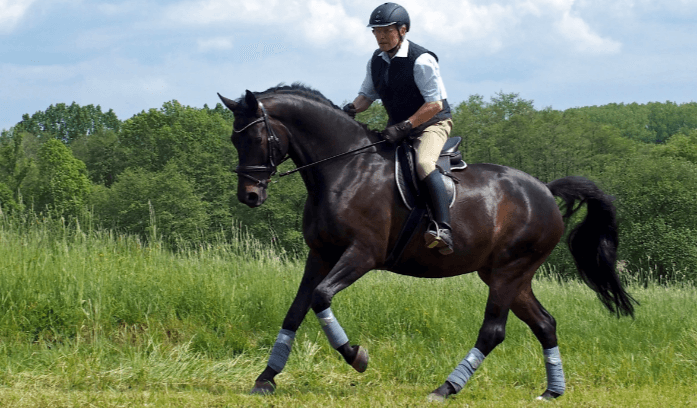How can a beginner learn to maintain proper posture while riding?

Introduction
Proper posture while riding is crucial for both comfort and safety. For beginners, learning to maintain correct posture can seem daunting, but with the right guidance and practice, it becomes second nature. This article provides an in-depth look at the techniques, tips, and exercises that can help beginners maintain proper posture while riding, whether on a bicycle, motorcycle, or horse.
Importance of Proper Posture While Riding
Maintaining proper posture while riding is essential for several reasons:
Health Benefits
Proper posture ensures that the spine is aligned, reducing the risk of back pain and other musculoskeletal issues. It also promotes better breathing and circulation.
Safety Considerations
Good posture improves stability and control, reducing the risk of accidents. It helps in reacting quickly to changes in terrain or traffic conditions.
Performance Improvement
Correct posture can enhance performance by improving efficiency and endurance. It allows riders to use their muscles effectively, conserving energy for longer rides.
Basic Principles of Proper Posture
Understanding the fundamentals of proper posture is the first step towards mastering it.
Aligning the Spine
Keeping the spine neutral, not too arched or rounded, helps in distributing weight evenly and avoiding strain.
Engaging the Core
A strong core supports the spine and maintains balance. Engaging the core muscles stabilizes the body, providing a solid foundation for riding.
Relaxed Shoulders
Tension in the shoulders can lead to fatigue and discomfort. Keeping the shoulders relaxed and down helps in maintaining a natural posture.
Common Mistakes Beginners Make
Beginners often make several common mistakes that can affect their posture.
Slouching
Slouching puts undue pressure on the spine and can lead to back pain. It’s important to keep the back straight and shoulders aligned.
Tension in Shoulders
Holding tension in the shoulders can cause stiffness and limit movement. Riders should focus on keeping their shoulders relaxed.
Incorrect Hand Placement
Incorrect hand placement can affect control and comfort. Hands should be placed in a natural, relaxed position, whether on handlebars, reins, or grips.
Step-by-Step Guide to Achieving Proper Posture
Here’s a step-by-step guide to help beginners achieve and maintain proper posture while riding:
Starting Position
Begin by ensuring that your equipment (bike, motorcycle, or saddle) is properly adjusted to your height and body proportions.
Adjusting the Bike/Seat
Make sure the saddle or seat is at the correct height. Your legs should have a slight bend at the knee when the pedal or stirrup is at the lowest point.
Fine-Tuning Posture
Focus on keeping your back straight, core engaged, and shoulders relaxed. Make small adjustments as needed to maintain comfort and control.
Exercises to Improve Posture
Incorporating specific exercises into your routine can significantly improve your riding posture.
Core Strengthening
Exercises like planks, sit-ups, and leg raises help in building a strong core, which is essential for maintaining proper posture.
Flexibility Exercises
Stretching exercises for the back, shoulders, and legs enhance flexibility, making it easier to maintain a neutral spine.
Balance Training
Activities like yoga, Pilates, and balance drills improve overall stability, aiding in better posture control.
Using Equipment to Aid Posture
Properly fitted gear and ergonomic accessories can support good posture.
Properly Fitted Gear
Ensure that helmets, gloves, and footwear are comfortable and provide the necessary support without restricting movement.
Ergonomic Accessories
Items like ergonomic handlebars, seats, and grips can make a significant difference in maintaining proper posture.
Posture Correctors
Posture correctors can provide additional support, especially for beginners who are still developing their posture habits.
Posture-Specific Tips for Different Types of Riding
Different types of riding require specific posture adjustments.
Bicycle Riding Posture
Maintaining good posture on a bicycle involves proper hand, foot, and saddle positioning.
Hand Placement
Keep hands relaxed on the handlebars, with a slight bend in the elbows to absorb shocks and vibrations.
Foot Position
Place the balls of your feet on the pedals, ensuring a smooth and efficient pedal stroke.
Saddle Height
Adjust the saddle height so your legs are almost fully extended at the bottom of the pedal stroke.
Motorcycle Riding Posture
For motorcycle riding, handlebar grip, foot peg position, and seat adjustment are crucial.
Handlebar Grip
Grip the handlebars firmly but not too tightly, allowing for smooth steering and control.
Foot Pegs
Place your feet on the foot pegs with a slight bend in the knees, maintaining balance and stability.
Seat Position
Adjust the seat so you can reach the handlebars and foot pegs comfortably without stretching.
Horse Riding Posture
Proper posture while horse riding includes sitting tall, using the reins correctly, and positioning the legs properly.
Sitting Tall
Sit upright with a straight back, shoulders back, and eyes forward to maintain balance and control.
Using Reins Correctly
Hold the reins with a gentle grip, using your hands to communicate with the horse without pulling or jerking.
Leg Position
Keep your legs close to the horse’s sides, with a slight bend in the knees to absorb movement and maintain stability.
Importance of Regular Breaks
Taking regular breaks during rides is essential for maintaining posture and preventing fatigue.
Preventing Fatigue
Short breaks help in relaxing the muscles and reducing strain, preventing fatigue and discomfort.
Reducing Strain
Stretching and walking around during breaks can alleviate pressure on the spine and muscles, promoting better posture.
Enhancing Comfort
Regular breaks enhance overall comfort, allowing for longer and more enjoyable rides.
How to Assess Your Posture
Assessing your posture regularly helps in making necessary adjustments and improvements.
Self-Check Techniques
Use mirrors or video recordings to check your posture and make adjustments as needed.
Using Mirrors
Mirrors can provide immediate feedback on your posture, helping you to correct it on the spot.
Professional Evaluation
Seeking professional evaluation from a riding coach or physiotherapist can provide valuable insights and personalized advice.
Role of Fitness in Maintaining Posture
Maintaining overall fitness is crucial for good posture.
Strength Training
Strengthening the muscles, especially the core, back, and legs, supports good posture.
Flexibility
Regular stretching and flexibility exercises prevent stiffness and promote a wider range of motion.
Endurance
Building endurance helps in maintaining proper posture for longer periods without fatigue.
Mental Focus and Posture
Mental focus plays a significant role in maintaining proper posture.
Mindfulness
Practicing mindfulness helps in staying aware of your posture and making necessary adjustments.
Concentration
Concentrating on your posture and movements enhances control and reduces the likelihood of mistakes.
Stress Management
Managing stress through relaxation techniques can prevent tension in the shoulders and back, promoting better posture.
Nutritional Support for Posture
Good nutrition supports overall health and posture.
Hydration
Staying hydrated helps in maintaining muscle function and preventing cramps.
Anti-Inflammatory Foods
Including anti-inflammatory foods in your diet can reduce muscle soreness and improve recovery.
Supplements
Supplements like omega-3 fatty acids, magnesium, and vitamin D can support muscle and bone health, aiding in better posture.
Tracking Progress and Adjustments
Tracking your progress and making adjustments is key to continuous improvement.
Keeping a Posture Journal
Documenting your posture practice, exercises, and any adjustments helps in tracking progress.
Regular Check-Ins
Regularly checking your posture and making necessary adjustments ensures continuous improvement.
Seeking Feedback
Seeking feedback from experienced riders, coaches, or physiotherapists provides valuable insights and advice.
FAQs About Riding Posture
How can I tell if my posture is correct while riding? Check your alignment in a mirror, video record your ride, or seek feedback from a coach. Proper posture typically involves a straight back, relaxed shoulders, and a slight bend in the knees and elbows.
What are the signs of poor posture while riding? Common signs include back pain, shoulder tension, fatigue, and difficulty controlling the bike, motorcycle, or horse. Regular discomfort or strain indicates that adjustments are needed.
How often should I practice posture exercises? Incorporate posture exercises into your routine at least three times a week. Consistent practice helps in building strength and muscle memory, leading to better posture.
Can using posture correctors help beginners? Yes, posture correctors can provide additional support and guidance, especially for beginners. They help in developing the muscle memory needed for maintaining proper posture.
Is it normal to feel sore after correcting my posture? Some initial soreness is normal as your muscles adjust to the new alignment. However, persistent pain should be evaluated by a professional to rule out any underlying issues.
How can I maintain good posture on long rides? Take regular breaks, stretch, and stay hydrated. Adjust your equipment as needed and focus on maintaining a neutral spine and relaxed shoulders throughout the ride.
Conclusion
Learning to maintain proper posture while riding is a crucial skill for beginners. By understanding the importance of good posture, practicing the basic principles, avoiding common mistakes, and incorporating specific exercises and equipment, riders can improve their comfort, safety, and performance. Regular assessment and adjustments, along with maintaining overall fitness and mental focus, contribute to long-term success in maintaining proper posture while riding. Keep practicing, stay mindful of your posture, and enjoy the many benefits that come with mastering this essential skill.





